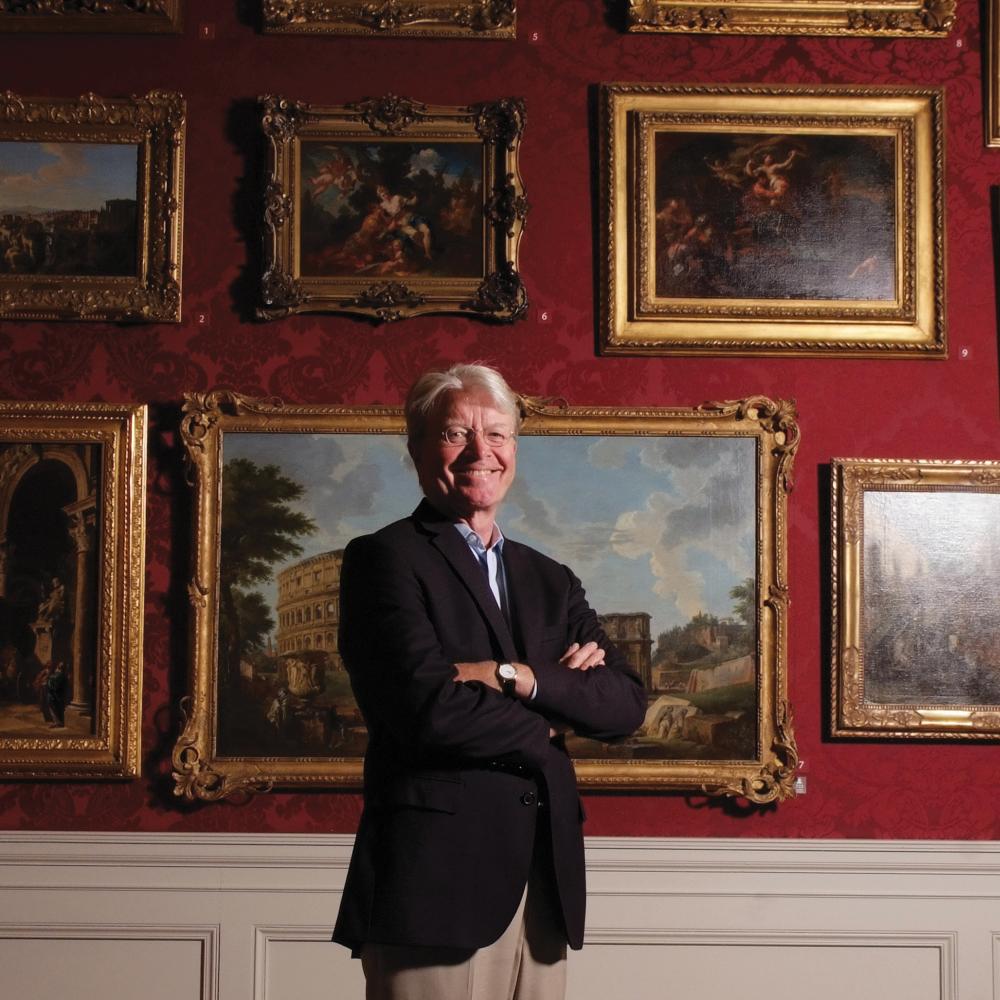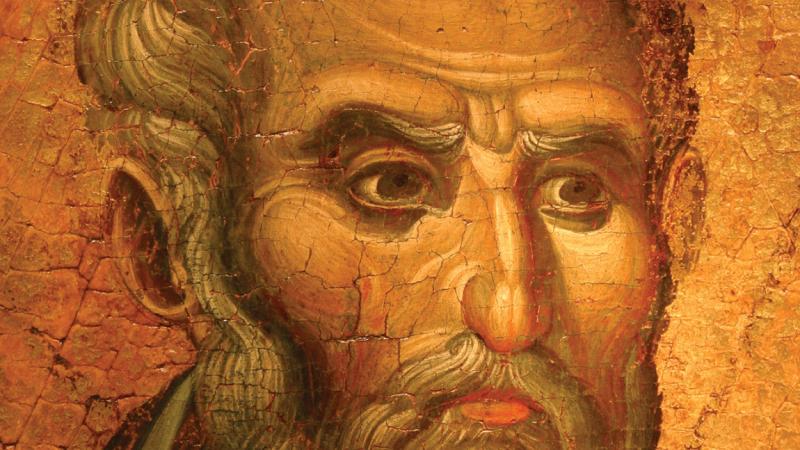There is always a backstory, perhaps simple, perhaps shocking, to the amazing objects and artworks in our favorite museums. The story may be displayed in the notecard alongside, or not. There may be too much story to tell.
Gary Vikan, a specialist in sacred objects of the Byzantine era, who has been chief curator and director of the Walters Art Museum in Baltimore, has written a book about some of the shadier backstories of extraordinary objects and exhibitions he has worked with in his long and distinguished career.
Sacred and Stolen: Confessions of a Museum Director is a series of loosely related detective stories. In his investigations of sacred objects of unholy provenance, Vikan reveals much about what goes on backstage at a museum and the morally gray pathways by which museum pieces sometimes arrive on the pedestals and shelves of the hot new exhibition.
Humanities: Where did you train as an art historian?
Gary Vikan: I received my bachelor’s at Carleton College and earned my PhD at Princeton University. Then I worked for 10 years at Dumbarton Oaks, which is a collection and research library in Washington, D.C.
Humanities: At Dumbarton Oaks, in 1982, you arranged for the purchase of an impressive Byzantine icon of Saint Peter. Later on it comes to haunt you. Why?
Vikan: For two reasons. First, soon after the purchase, I realized that the St. Peter icon had been smuggled out of Greece or (then) Yugoslavia incognito, that is, by being painted over with a “modern” or inferior image. I knew this because I saw the residue of the overpaint in the small cracks in the hair of the saint, and because the panel bore no inscription. The inscription, I realized, would have been lost as the overpaint was removed, since it was on the slick surface of the background gilding.
Second, as I wrote my memoir, it became clear to me that our method of “clearing” the purchase with potential countries of origin, which involved letters to embassies and, in this case, to Greek and Yugoslav scholars, bypassed the party with the strongest interest: the members of the parish church from which the icon was taken not so many years earlier.
Humanities: Where is the St. Peter now?
Vikan: Dumbarton Oaks.
Humanities: Who is Dominique de Menil and what did you learn from her about stolen antiquities?
Vikan: Dominique de Menil was a French oil heiress who moved to Houston with her husband during World War II and stayed there for the remainder of her life. An avid art collector and a generous philanthropist, Dominique collected art from many world cultures and created the Menil Collection, a handsome museum in her adopted city, which is especially strong in modern art. I worked for several years on her collection of small Byzantine bronzes.
Dominique was driven by a strong, ecumenical spirituality. She had the courage to commit her reputation and wealth to saving the frescoed interior of a thirteenth-century Byzantine church that had been looted after the Turkish invasion of northern Cyprus in 1974. Dominique bought the looted frescoes from a Turk in Munich in 1983, arranged to have the 38 pieces meticulously restored in London, and then exhibited them (a dome and an apse) in a modernist chapel in Houston until 2012, when they were sent back to Cyprus. What I learned from Dominique is that in perilous times, museums and collectors of courage may need to commit to providing safe harbor for the “art refugees” of international conflict.
Humanities: In essence, buy stolen pieces and save them?
Vikan: Yes.
Humanities: You were a curator at the Walters Art Gallery in 1988 when a security guard walked off with numerous objects and books from the Asian collection. What happened there?
Vikan: In terms of the number of museum items stolen, the Walters inside job of 1988 must rank near the top: 145 works in all. The culprit was the Walters’s head of night security, Greg Bartgis. He was a skilled carpenter and art installer, which meant that he could remove a few items from a case and then arrange those that remained to look “complete.” For days we were unaware that anything was missing. His thievery was only discovered when our curator of Asian art returned from vacation and noticed that one of our prize pieces, the Peach Bloom Vase, was nowhere to be found!
Greg had taken the works home in his backpack over a period of weeks. He lived four miles from the museum and did not drive, so it was a long trek home.
I met up with Greg in the summer of 2014, while writing my memoir. I asked why he did it. He told me that he was driven by a powerful compulsion. About the Peach Bloom Vase, he said, “I loved to fondle it.”
Humanities: Because you have been a successful curator and a museum director, perhaps you can distill for us what makes for a dramatic exhibition, one that compels public attention and critical interest.
Vikan: I have always felt that my job as a curator and museum director was to provide an experience—which, if successful, might inspire specific learning. We address emotions and affect, and, if we are good at it, we leave our visitors somehow transformed. The museum experience I sought is a spiritual experience, without being specifically religious.
Since my college days, I have puzzled over the nature of aesthetic experience. That led me in my last years at the Walters to partner with Johns Hopkins University neuroscientists in exploring how the brain engages with beauty. One small exhibition we mounted was called “Beauty and the Brain,” with our visitors choosing their most and least favorite shape among 25 morphed shapes on a large panel. (These were mathematical distortions of a Jean Arp sculpture.) The exhibition helped the Hopkins neuroscientist Ed Connor demonstrate that our brains are hardwired to like certain shapes and not others. This is what the aesthetician Clive Bell, a century ago, called “significant form.”
Humanities: Why did the Walters Museum cease to charge an admission fee in 2006? What was the outcome?
Vikan: I eliminated the general admission fee at the Walters for one simple reason: because Henry Walters had gifted his collection of 22,000 works covering five millennia to the city of Baltimore “for the benefit of the public,” which means that the public owns the collection, and should therefore have unhindered access to it.
I felt the same way about our digital assets. The Walters was one of the first U.S. museums to make high-quality images of its works available worldwide via Creative Commons.
The results were gratifying. Attendance shot up, as did the diversity of our audience. And as for our images, they are all over Wikipedia, which means that if someone looks up, for example, the medieval art of Lombardy, they will see Walters works.
Humanities: In your book you take issue with theAssociation of Art Museum Directors’s 2008 guidelines that members “should not acquire a work . . . that . . . was outside its country of probable modern discovery before 1970.” You applaud and criticize this rule. Why?
Vikan: I think the Association of Art Museum Directors took a big step forward in their acquisition guidelines when they abandoned wording that called on member directors “not knowingly” to acquire illegally exported works and replaced it with wording that asked them not to acquire works without a paper trail back to 1970, the date of the UNESCO Convention on cultural property.
That was good. But these guidelines left hundreds of thousands of artworks out in the cold: the “orphans” in private U.S. collections and dealers’ warehouses that lack that documentation.
My solution is to put those works on the Internet and invite investigation by possible countries of origin. Those works which, after a period of several years, prompt no source-country claims, can then be gifted to art museums or sold.
Humanities: You have sympathy for some of the thieves you mention in your book. How so?
Vikan: In my book I tell two stories about thefts of artworks by museum staff: one at the Walters and one at the Baltimore Museum of Art. I discovered that the thieves share something in common with me, with most museum professionals, and with a large segment of the public. They felt, I am certain, a sense of awe in handling original works of art, as if they were connecting through touch to the genius of the past. Some of us are paid to touch art and move it from place to place—and to live with it. Others, when they try to do the same thing, are prosecuted as felons.




